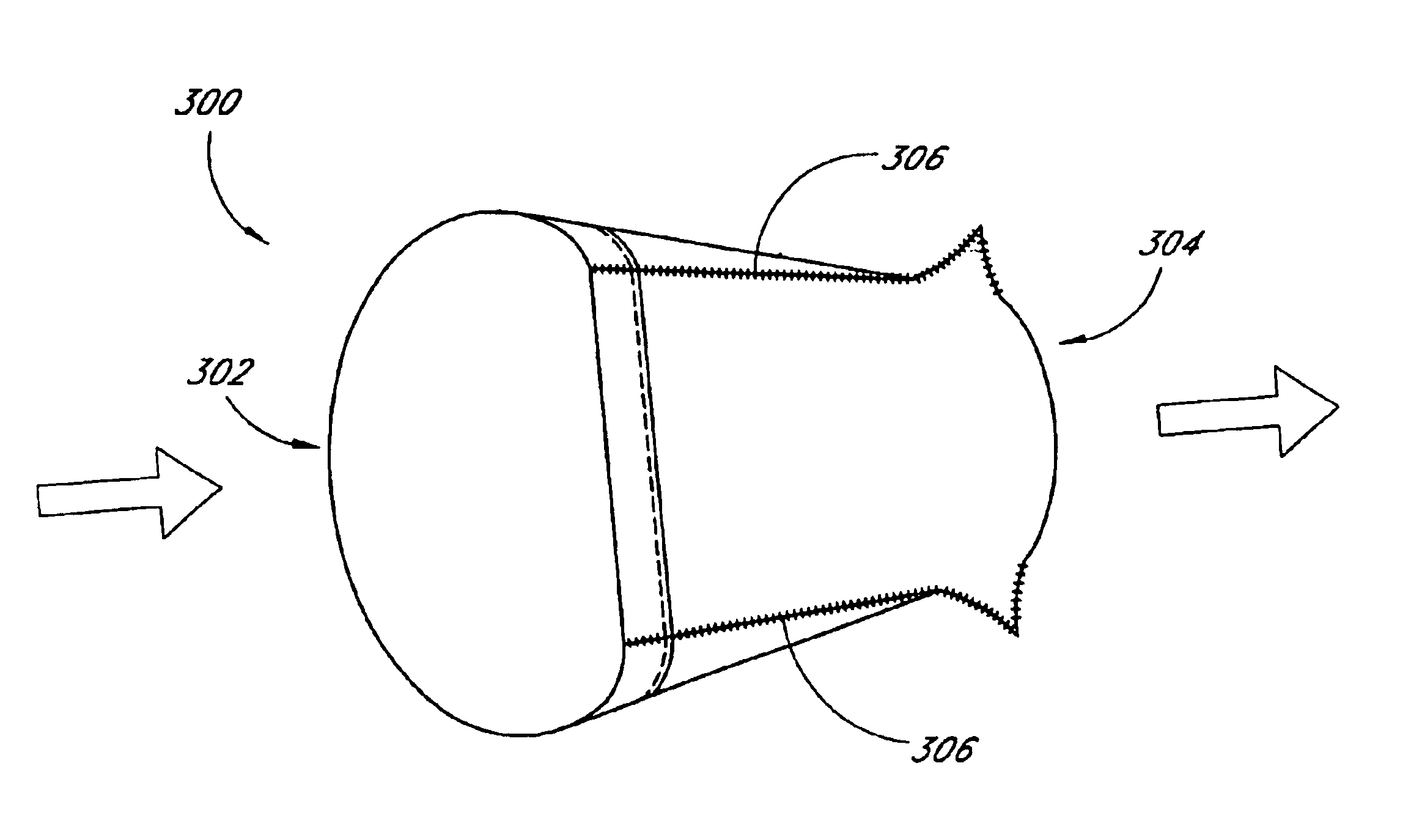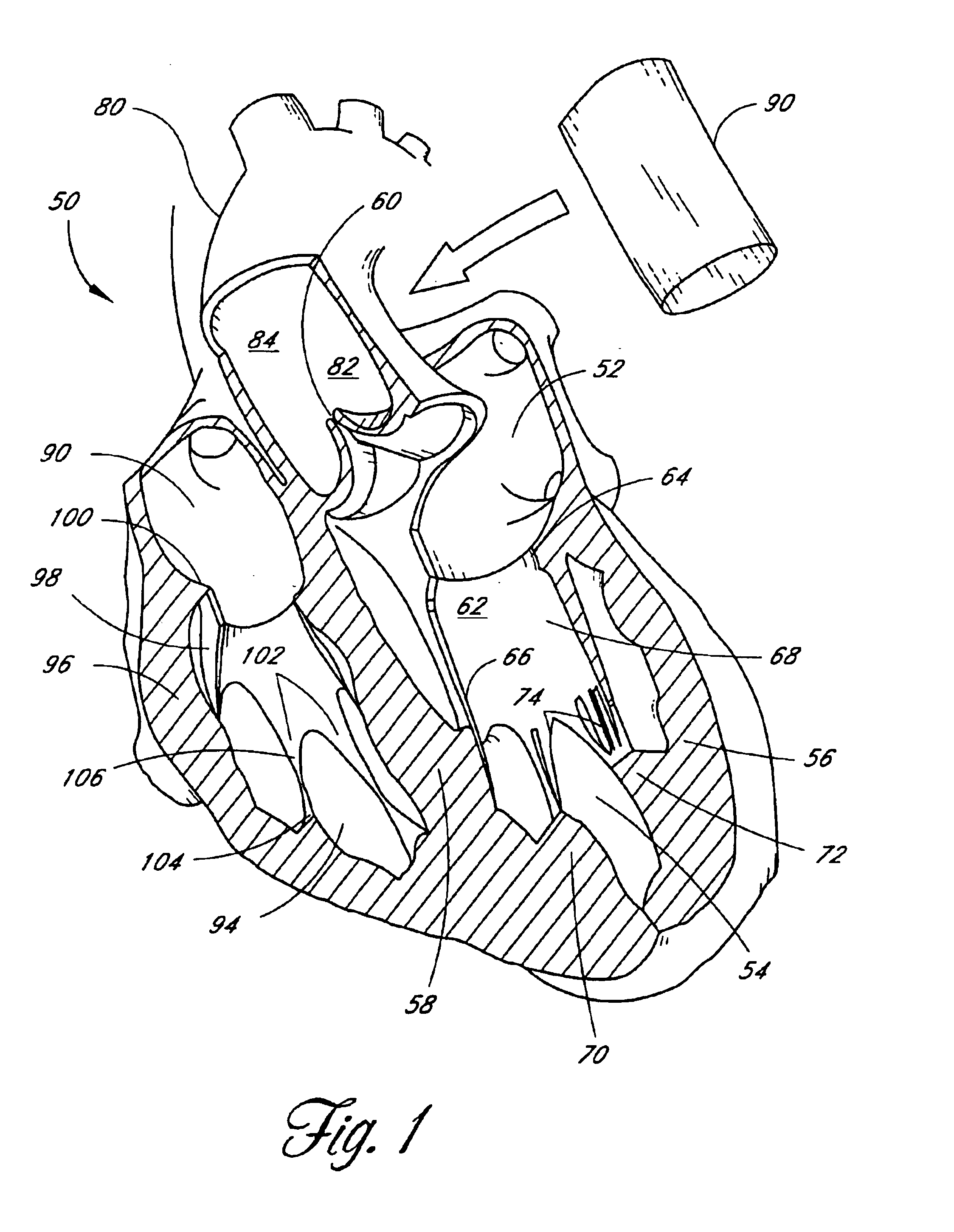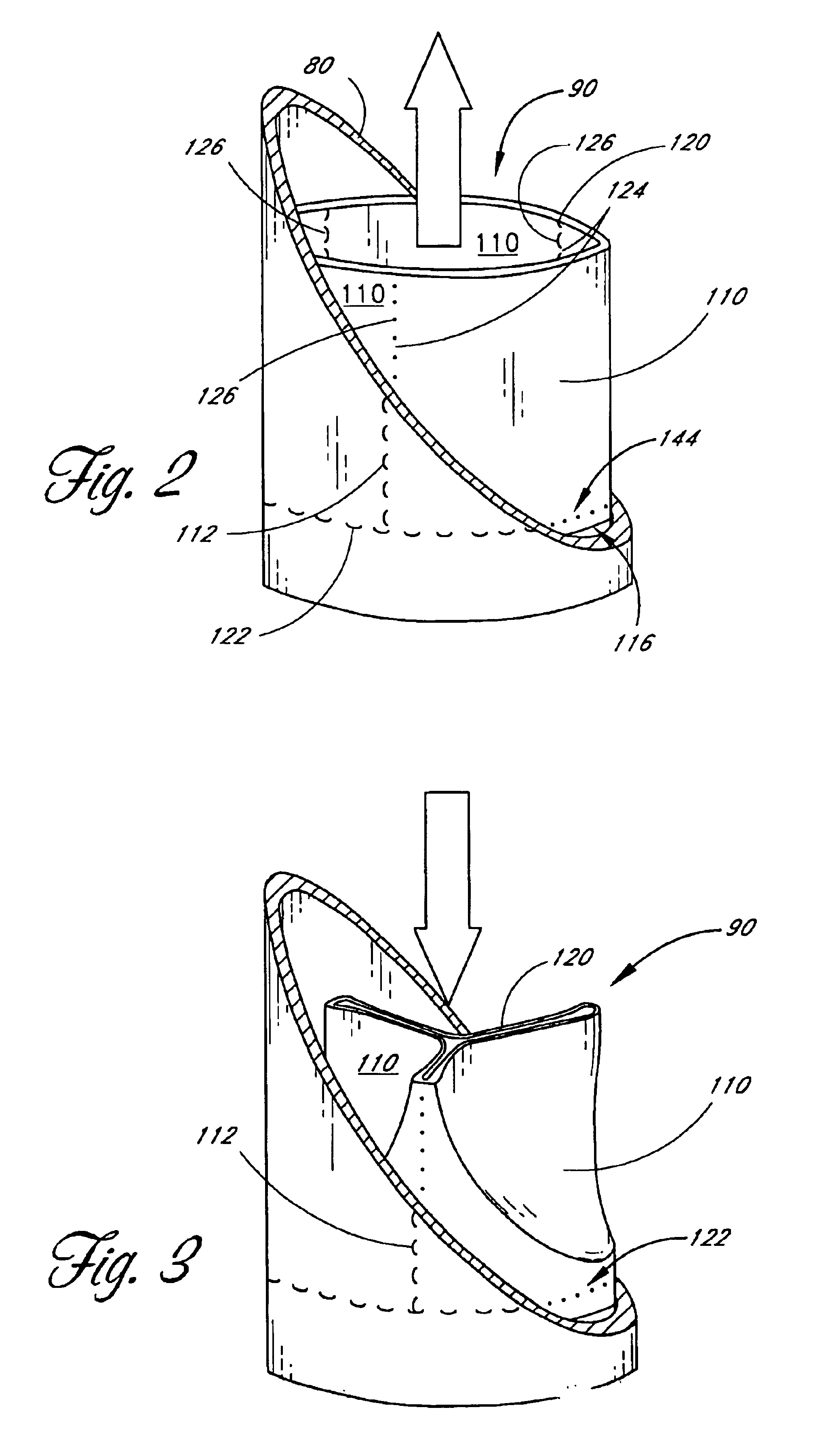Prosthetic heart value
a heart valve and prosthesis technology, applied in the field of heart valve replacement, can solve the problems of increased workload on the heart, stenosis and insufficiency, and emergency surgery, and achieve the effects of improving hemodynamic performance, nonthrombogenicity, and durability
- Summary
- Abstract
- Description
- Claims
- Application Information
AI Technical Summary
Benefits of technology
Problems solved by technology
Method used
Image
Examples
Embodiment Construction
[0067]FIG. 1 shows a cross-sectional cutaway depiction of a normal human heart 50. The left side of heart 50 contains a left atrium 52, a left ventricular chamber 54 positioned between a left ventricular wall 56 and a septum 58, an aortic valve 60, and a mitral valve assembly 62. The components of the mitral valve assembly 62 include a mitral valve annulus 64; an anterior leaflet 66 (sometimes called the aortic leaflet, since it is adjacent to the aortic region); a posterior leaflet 68; two papillary muscles 70 and 72, which are attached at their bases to the interior surface of the left ventricular wall 56; and multiple chordae tendineae 74, which couple the mitral valve leaflets 66 and 68 to the papillary muscles 70 and 72. There is no one-to-one chordal connection between the leaflets and the papillary muscles; instead, numerous chordae are present, and chordae from each papillary muscle 70 and 72 attached to both of the valve leaflets 66 and 68.
[0068]The aorta 80 extends general...
PUM
 Login to View More
Login to View More Abstract
Description
Claims
Application Information
 Login to View More
Login to View More - R&D
- Intellectual Property
- Life Sciences
- Materials
- Tech Scout
- Unparalleled Data Quality
- Higher Quality Content
- 60% Fewer Hallucinations
Browse by: Latest US Patents, China's latest patents, Technical Efficacy Thesaurus, Application Domain, Technology Topic, Popular Technical Reports.
© 2025 PatSnap. All rights reserved.Legal|Privacy policy|Modern Slavery Act Transparency Statement|Sitemap|About US| Contact US: help@patsnap.com



